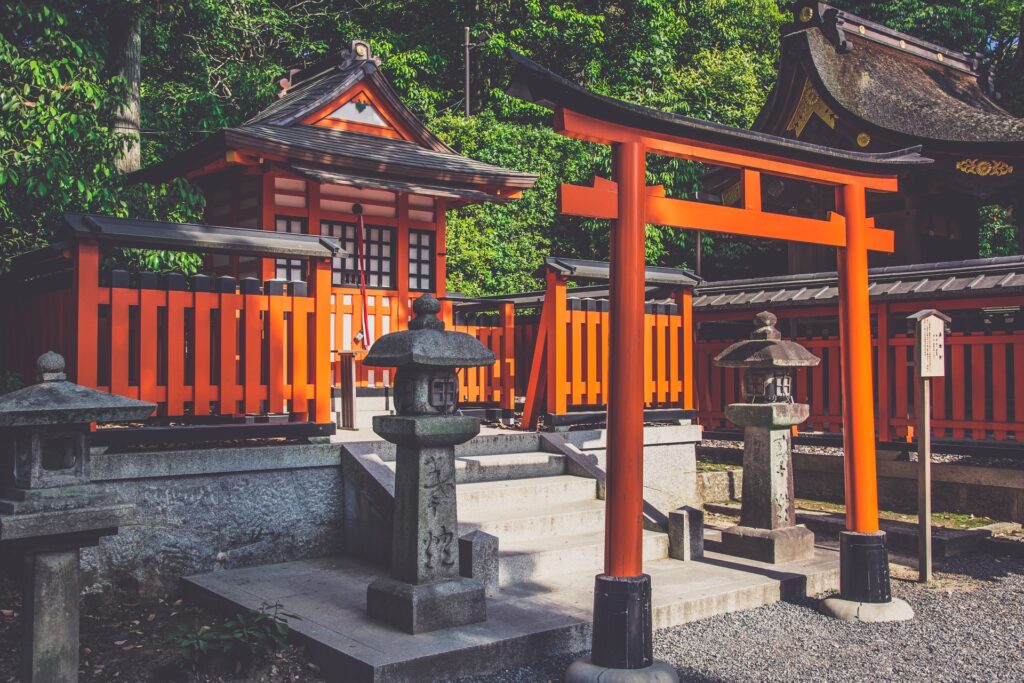“Hatsumoude(初詣)” is a traditional Japanese event to visit a shrine or temple for the first time in the new year. “Hatsumoude” is the first time you visit a shrine, so you don’t necessarily have to go on January 1st.
The purpose of “Hatsumoude” is to express gratitude for the past year and pray for a safe new year.
“Hatsumoude” in English, we say “The first shrine (temple) visit of the year” or “The new year’s visit to a shrine (temple)”.
It is said that the origin of “Hatsumoude” is the Heian period custom called “Toshigomori(年籠り)”. “Toshigomori” is an event in which people stay at a shrine from the evening of December 31 (New Year’s Eve) to the morning of New Year’s Day to pray for a good harvest and safety in the New Year. Over time, this “Toshigomori” has been divided into “Joyamoude(除夜詣)”, which is a visit on New Year’s Eve, and “Ganjitsumoude(元日詣)”, which is a visit on New Year’s Day.
Do you know what kind of etiquette there is for “Hatsumode“? Let’s check it out.
Manners when visiting the shrine
The shrine has a “Torii(鳥居)” gate. Since the “Torii” gate separates the sanctuary, bow once before entering. Before worshiping, purify your hands and mouth by performing “Temizu(手水)”.
How to cleanse
1. Hold the ladle with your right hand and scoop some water, then pour water over your left hand to cleanse it.
2. Switch the ladle with your left hand and pour water over your right hand.
3. Hold the ladle with your right hand, take a little water with your left palm, put it in your mouth, and gently rinse your mouth out. Do not make noise or put your mouth directly on the ladle.
4. Sprinkle some water on your left hand, then hold the ladle upright and rinse the handle with the remaining water.
5. Put the ladle back in place.
Worship procedure
1. Gently insert the coin in an offertory box.
2. Ring the bell.
3. Bow twice.
4. Clap twice in front of your chest.
5. Put your hands together and pray.
6. Put your hands down and bow once.
By when should we go?
It is said that it is desirable to go from January 1st to January 3rd, but it is said that it is better to visit “Matsunouchi(松の内)” at the latest. ”Matsunouchi” is a period. The period differs depending on the region, and is said to be until 1/7 in Kanto and 1/15 in Kansai.
Where should we go?
For New Year’s visit, it is recommended to go to a local guardian deity or a temple that has been indebted to your family for generations. However, in recent years, more and more people are going to famous shrines and temples, and it is true that the connection with shrines and temples is fading.
In fact, it is often crowded during the New Year’s visit, so it is recommended that you visit with plenty of time to spare.

初詣とは新しい年を迎えて初めて神社やお寺に参拝する日本の伝統行事のことです。初詣というのは初めて参拝することなので、必ずしも1/1に行く必要はありません。
初詣の目的は、昨年の感謝を伝えて新年も無事に過ごせるようにお祈りをすることです。
英語で”The first shrine(temple) visit of the year”もしくは”The new year’s visit to a shrine(temple)”と言います。
初詣の起源は平安時代の「年籠り」という風習と言われています。年籠りとは、12/31(大晦日)の夕方から元日の朝にかけて神社にこもり、新年の豊作や安全を夜通し祈るという行事です。この「年籠り」が時代を経て、大晦日にお参りする「除夜詣(じょやもうで)」と、元旦にお参りする「元日詣(がんじつもうで)」に分かれたのではないかと考えられています。
初詣はどのような作法があるかご存知でしょうか?確認してみましょう。
<参拝時のマナー>
神社には鳥居があります。鳥居は聖域を区切るものであるため、入る前には一礼します。参拝の前には手水を行い手と口を清めます。
<清め方>
1.右手で柄杓(ひしゃく)を持って水をすくったら、左手に水をかけて清めます。
2.左手で柄杓を持ち替え、右手に水をかけます。
3.右手で柄杓を持ち、少しの水を左の手のひらで受けて口に含み、静かに軽く口をすすいで出します。音を立てたり、柄杓に直接、口をつけてはいけません。
4. 左手に少し水をかけたら、ひしゃくを立てて残った水で柄を流します。
5. 柄杓を元の場所に置きます。
<参拝手順>
1.賽銭をそっと入れる
2.鈴を鳴らす
3.2回お辞儀をする
4.胸の前で2回拍手をする
5.両手を合わせてお祈りをする
6.手を下ろし、お辞儀を1回する
いつまでに行けば良いのか?
1/1~1/3までにいくのが望ましいと言われておりますが、遅くても松の内までにお参りするのが良いとされています。松の内とは地方によって期間が異なり、関東では1/7まで、関西では1/15までとされています。
どこに行けば良いのか?
初詣は地域の守り神である氏神様か、自分の家が先祖代々お世話になっている寺に行くのが良いとされています。ただし、近年では有名な神社やお寺に行く人も多くなっており、神社や寺と結びつきが薄れていることも事実です。
実際初詣をする時は混雑していることが多いため、時間に余裕を持って参拝することをお勧めします。

